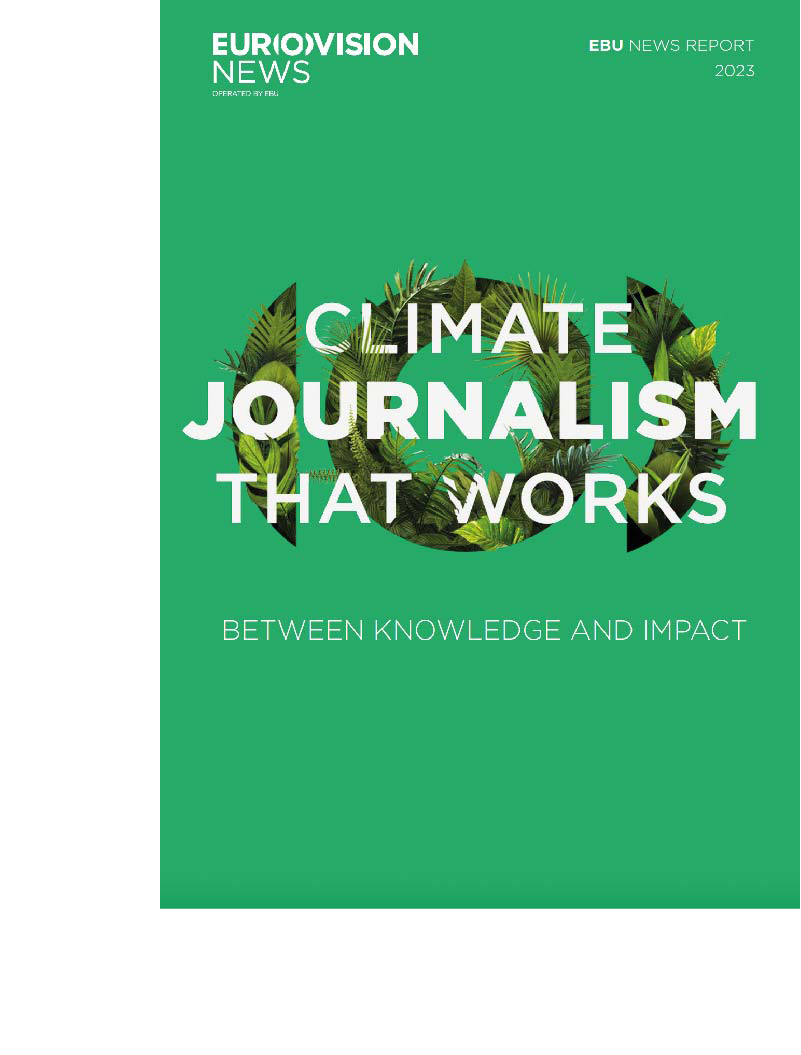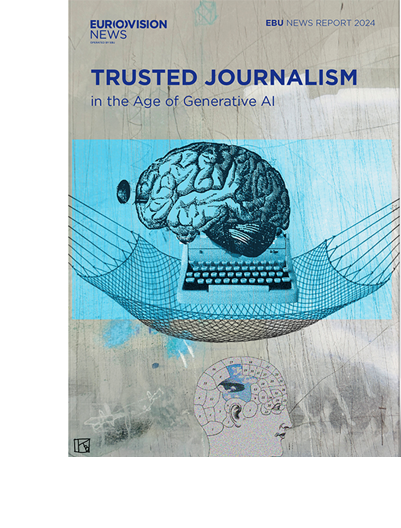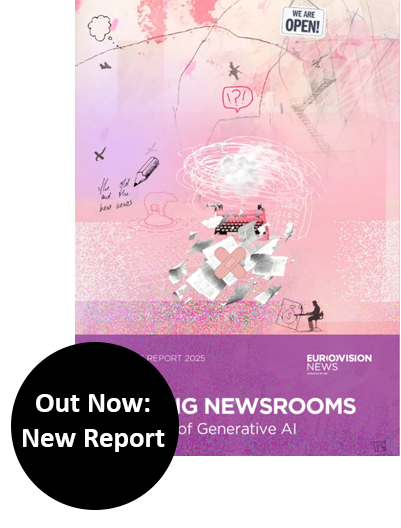The printed newspaper has been on life-support for a while, but chances are it might not survive the corona crisis. Now it is critical that the journalism doesn’t get dragged down with it – at a time when it is essential for survival.
Clayton Christensen did not live to see the corona crisis. The professor of Harvard Business School who developed the famous concept of disruptive innovation died of cancer this year in January. In his book “The Innovator’s Dilemma” he dealt with the inherent reluctance of highly successful companies to reinvent their business models when confronted with ground-breaking new technologies. In an article called „Breaking News“ he addressed the media industry in particular. This was in 2012.
Eight years later the Covid-19 pandemic throws the world economy into a disruption of unheard proportions. It fosters technological adaptation and forces innovation at rapid speed. Only in retrospect will we learn which ones of these will prove to be truly innovative – as in good for society. But the world of business and work will never be the same again.
What we see in the media industry might not differ too much from others: Companies that have already embraced technological change and made it part of their culture are better off now. In these days of uncertainty when people are craving news and information like never before, they engage readers through their digital channels and products and gain subscribers in unprecedented proportions. Even the ones who have taken their paywalls down for coronavirus coverage attract loyal readers who are willing to pay for quality journalism.
The others, who have been rather cautious in marketing digital subscriptions while guarding their revenues from printed newspapers like a treasure are now at the tail end. They face the innovator’s dilemma as described by Christensen, their fight for survival will be particularly fierce. Because the breakdown of the advertising market combined with looming production challenges mean that the remaining days of print will be counted down much faster now than ever before.
In some places, the countdown is over already. British JPI media group recently announced to stop print production for twelve titles. A city like Milton Keynes with more than 200 000 inhabitants will then have no newspaper any longer. In case of the coronavirus, this situation is particularly tricky, because the most vulnerable part of the population is at the same time the digitally most underserved and therefore print dependent: the elderly.
In the US, bets are already on about who will be running out of the cash needed to fuel the printing presses. Many local newspapers are directly or indirectly owned by investment funds who tend to get rather impatient with financial underperformance. The number of news deserts that don’t have any local journalism to offer will grow once more.
The thought of reducing the number of weekdays when print newspapers are produced is not new. Many publishers have been thinking about this for quite some time. Some acted on it years ago, not always with fortune. When the New Orleans Times Picayune went from a seven-day-per-week printing schedule to a mere three days in 2012, it marked the beginning of the end for the once proud newspaper that in its golden days two thirds of all households had subscribed to. Portuguese Diario de Noticias from Lisbon went from seven daily editions to just one weekend edition in 2018. Before Corona hit, editor-in-chief Catarina Carvalho had her doubts whether this had been the right strategic move, now she is glad. It may be Diario’s ticket to survival. Only recently, the Tampa Bay Press announced it would cut down printing to the Wednesday and Sunday edition.
This might also be needed as an emergency response. Not only has the corona crisis slashed advertising volume in an already ailing market. But many publishers fear that production and distribution problems could materialise, once illness and restrictions hit personnel and supply chains. And then there is the shortage of cash. As Maria Ressa, the world-famous, award-winning journalist and founder of the digital news platform Rappler.com recently put it in a call: “We have to flatten the curve of expenses.” Apart from chasing facts and protecting staff, making sure the money lasts is a priority now.
For some publishers, it’s not exaggerated to compare the situation with the ones of doctors in emergency rooms or intensive care units: They would love to keep all the patients alive but have to focus on those with the best chances for survival. The crisis confronts newspapers with life-or-death decisions, media analyst Ken Doctor wrote in a rather gloomy piece for Nieman Lab. First question on the list publishers currently considered in his words: “Will we keep seven days of print publishing?” Buzzfeed reporter Craig Silverman was even more outspoken days before: „The Corona Virus is a Media Extinction Event“, he wrote.
In some markets like Germany the situation looks less strained – at least to the outside world. To the contrary: readers resort to traditional news media in droves when craving the latest information. Those who have to stay home rediscover the ritual of reading print. Some newsrooms even report rising numbers of print subscriptions. But quietly publishers have already reduced page volume and variations in local editions. This is not only because of advertising Armageddon. Apart from corona content that everyone is devouring, there is much less material to fill the pages. Sports competitions and all kinds of culture and business events have been canceled, editors are busy with crisis management, and research is getting difficult, since reporters are advised to keep their risk of exposure to a minimum to not endanger themselves and their families.
In some European media companies, staff is on reduced work schedules – a common government policy to help companies with cost reduction in crisis situations. Even Germany’s most famous political magazine Der Spiegel, known for its generous salaries and working conditions, is apparently considering such a move.
And once cuts made, reductions are there to stay. It is a hardly guarded secret that readers who cancel print subscriptions do so more often because they feel overwhelmed by too much stuff rather than for receiving too little in volume. In an age of information over-abundance, less is often more. Additionally, publishers will go through great length in the weeks to come to digitally activate their print subscribers, just in case. And once readers are online, they will get used to it. Building habit is the recipe for success in any subscription venture, online or offline. “People are going to spend a lot of time online for the foreseeable future. And so far, we have few examples of people returning to offline media once they have embraced online ones”, Rasmus Kleis Nielsen, Director of the Reuters Institute for the Study of Journalism at the University of Oxford wrote analysing the situation for the industry.
In many countries, print newspapers won’t disappear from breakfast tables right away. But a sizeable number of publishers will soon count their losses and reduce publishing to just one edition on the weekend. This is when even younger audiences enjoy a slower pace of life, those who haven’t been able to understand the concept of space consuming print editions for some time.
The step from one down to zero will be a short one then. Some people might not even notice in the turbulence of an economic crisis that is likely to stay with us for some time. That is, as long as the journalism survives.
This is what everyone – publishers, governments, platform companies, foundations and funders – should now focus their efforts on. For newsrooms, it is essential to speed up digital transformation and focus on audiences’ needs, the coronavirus-crisis is an excellent opportunity for this. Now quality media are indispensable resources for citizens to inform their daily decisions in times of uncertainty. Platform companies need to keep on their industry support, they have to make sure that it is guided by industry and citizen needs. The fight against misinformation is particularly critical when lives are at stake.
Emergency funding will be necessary, presumably everywhere.The Danish parliament for example in early April passed a 25 million Euro relief package for the media industry that will compensate for revenues lost through the advertising crisis. Other countries like Austria will follow suit. Journalists themselves will need to keep an eye on whether the distribution of such support will be fair and benefit independent quality journalism. It is well known that many governments use crisis situations as an opportunity to play favourites and get rid of critical voices.
Being ahead in the digital game used to be a matter of competition. Now rapid and sustainable digital transformation has become a matter of survival. Democracy can live without print. It cannot persevere without strong and independent journalism.
Copyright: Alexandra Borchardt 2020




MUNICH – When a local radio station in Charlotte, North Carolina started a podcasting competition in its community, it was prepared for many contingencies, except one: that the response would overwhelm the station’s server. The initiative was aimed at increasing on-air diversity, and tens of thousands of people wanted in. Groups and individuals from all walks of life submitted more than 370 ideas for podcasts, and 33,000 listeners logged on to vote for them. What started as a one-time experiment will now be a regular feature.
Journalism has always suffered from a lack of diversity. Demographically uniform newsrooms have been producing uniformly homogeneous content for decades. And while editors around the world have increasingly recognized that this is a problem, too little has been done to address it.
One reason, ironically, is a preoccupation with digital change. “There has been so much focus on digital transformation in recent years, the question of diversity has had to stand aside,” explains Olle Zachrison of the Swedish public broadcaster Sveriges Radio, in a study comparing diversity efforts in the United Kingdom, Sweden, and Germany. And yet, as the newsroom in Charlotte discovered, diversity is not just an added bonus; it is at the very core of audience engagement today.
In explaining the business ethos of the digital age, Amazon founder Jeff Bezos has argued that it is all about “customer obsession as opposed to competitor obsession.” For the media, then, the guiding principle should be “audience first.” And that means using data to understand and cater better to it.
Not long ago, editorial choices were guided mostly by gut feelings and assumptions, whereas now they are often informed by analytical metrics and revealed truths about audience behavior. Some of these revelations are uncomfortable. Editors can no longer fool themselves about their journalism’s real-world impact. They now know that even the best stories tend to reach just a fraction of their hoped-for audience.
Complicating matters further, newsrooms have discovered that demand can peak at times when they have no new offerings, or when what they’re serving is not what consumers are seeking. In surveys like the Digital News Report, respondents often complain that the media offer too much negativity and volume, and too little explanation and relevant coverage.
Before digitalization, journalists didn’t have to think about their audiences as much as they do now. Newspapers were money-printing machines – the advertising dollars poured in regardless of what would now be called “content.” Likewise, public-service media faced almost no competition. But now that digital information is a commodity, with a few major platforms controlling its distribution, audience loyalty has become a matter of survival.
Many newsrooms were entirely unprepared for this new reality. They don’t even know who their potential new customers are, let alone how to reach them and win their trust. The problem is not just that newsroom homogeneity results in an incomplete view of the world and of the reading/listening public. It is that even when “outsiders” do land a job in this kind of environment, they tend to adapt to the dominant culture rather than challenge it. As a result, newsrooms remain ill equipped to reach out to new audiences.
The lack of diversity in the media has actually worsened in recent decades. Back in the heyday of local news, newsrooms were no less white or male, but being a journalist at least didn’t require a university degree – only a willingness to dive in and chase leads. Yet as the industry became concentrated more in big cities and employment prospects elsewhere diminished, education became yet another entry barrier. While the better-educated candidates moved up to higher-profile jobs, many others left the profession altogether.
In keeping with the industrial society of the time, the occupational model that followed from these changes was hierarchical. As with teachers and their pupils, preachers and their congregations, and experts and the lay public, education conferred status and authority upon journalists. The public was a passive recipient of information, not an engaged participant in a broader conversation.
Clinging to this hierarchical structure is now a recipe for failure. The digital world of information is one of choice and abundance, but also of considerable confusion about what is true and false. Trust is a news organization’s most valuable asset, and the task for journalists is both to challenge and inspire their audience, and to invite conversations among them.
That can’t happen unless journalism represents the society in which it is operating. Unfortunately, a recent global survey of media leaders finds that while editors see progress toward gender diversity, much more must be done to achieve racial and political diversity, as well as a balance between “urban” and “rural” backgrounds. The most likely reason for this failure is that industry leaders continue to regard the digital transformation as a matter of technology and process, rather than of talent and human capital.
Fortunately, the digital transformation represents an opportunity. As Jeff Jarvis of the City University of New York explains, industry leaders should “Try listening to, valuing, and serving the people and communities who were long ignored and left unserved by our old industry, mass media.” All news organizations should take Jarvis’s advice – and not just because it is the right thing to do. Their own survival depends on it.
This commentary was published in ten languages by Project Syndicate on June 25, 2020